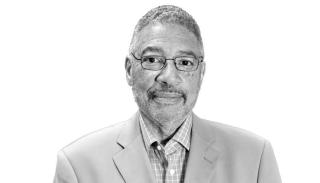
[OP-ED]: New Analysis Confirms What Philadelphia Officials Deny: Racist Policing
MORE IN THIS SECTION
That news item on the philly.com site reported findings from a new examination of Philadelphia’s controversial stop-and-frisk policing conducted by Villanova University criminology professor Dr. Lance Hannon.
Hannon’s analysis of Philadelphia Police Department data, that news item noted, detailed how stop-and-frisk strafes entire black neighborhoods not just individuals.
Significantly, Hannon’s findings refute a persistent police defense of stops-and-frisks: the practice is most intense in black communities solely because those communities have high-crime rates, not because blacks populate those areas.
Hannon found that police frisking remains disproportionately intense in black communities whether those communities have high rates of crime or very low rates of crime.
“Neighborhoods with low levels of criminal activity are erroneously considered dangerous due to the prevalence of African American residents,” Hannon told that reporter.
“There seems to be good evidence that it’s not just the stigma associated with an individual’s race that potentially drives bias; the stigma associated with a neighborhood’s race also affects bias.”
Blacks account for 70 percent of police stops in Philadelphia and 77 percent of persons frisked by police according to a report from police data prepared a few months ago by the ACLU of Pennsylvania.
RELATED CONTENT
Reports from the ACLU, Hannon and others persistently document that police recover less contraband, like weapons and drugs, during frisks of blacks in Philadelphia than frisks of whites.
Latinos do not experience the “same widespread and systemic” stops-and-frisks as blacks in Philadelphia stated ACLU-PA Deputy Legal Director Mary Catherine Roper during an interview last week. Latinos comprise 7 percent of the police stops and 8 percent of the frisks that ACLU report stated.
More disturbing than Dr. Hannon’s findings documenting a race-tainted reality embedded in stop-and-frisk is the fact that this police practice has persisted for decades due largely to denials of its obvious color-coded impropriety by a succession of City officials – from mayors to City Council and the courts.
Philadelphia Mayor James Kenney backed away from his vote-generating campaign pledge to end stop-and-frisk on requests from Police Commissioner Richard Ross who claimed the practice is vital for crime fighting. Kenney is white and Ross is black.
A trigger for stop-and-frisk is racial profiling; that widely discredited practice erected on prejudicial premises that crime abounds among non-whites.
In the early 1990s, federal government drug tests on arrestees in Philadelphia found that white women were the largest users of heroin in the city. Yet, that federal data did not result in Philly police targeting white women for drug-related stops-and-frisks…even in high crime areas.
A 1952 University of Pennsylvania Law Review article stated that “several” high-ranking Philadelphia Police Department members were “strongly opposed” to giving police the right to frisk, fearing “many officers” would carry the practice “to extremes.”
Six decades of ‘extremes’ is long enough…







LEAVE A COMMENT:
Join the discussion! Leave a comment.